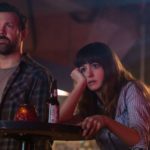
The Best Shots of the 1940’s
Oh hell yes, you’d better believe we’re doing more of these bad boys. Like we’re gonna just give up before they invented crazy shit like the steadicam or colour-grading. Last time, we had a whole heap of classic films, and this time we haven’t really changed that much. We have definitely included a handful of films you’d expect from “the best shots of the 1940’s” list, but hopefully, we’ve also included a couple of surprises.
One of the cool things about this list compared to the previous two is that we were able to include some animation. Animated movies and shorts are always full of amazing, dynamic imagery and we picked a couple of popular films you’ve probably seen before, but it’s worth looking into lesser-known works from the era for some real treats. Just watch out for, you know, the incredible amounts of racism.
It’s also important to note that this list is by no means exhaustive. I could make a list of my favourite ten shots from a single film in a single year in the ’40s. We just tried to pick fun options or ones that popped into our heads immediately. I mean, damn, neither of us picked Citizen freakin’ Kane, one of the best-shot films of all time. So don’t yell at us.
Here you can find our articles for the 1920’s and 1930’s. Enjoy them and enjoy this one and come back for the next, like, seven of these damn things. (Insha: YEAH BOI.)
10. It’s a Wonderful Life (1946)
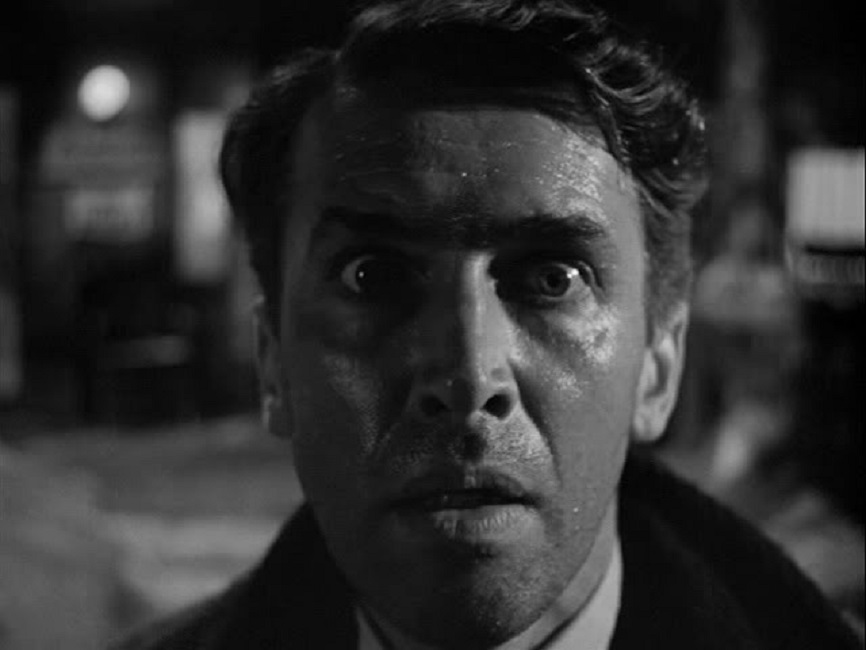
It’s a Wonderful Life is a weird-ass movie. The majority of the film is backstory being told to an angel by two other angels that are visualized by celestial bodies. It’s an odd, odd story and it’s not a big surprise that it bombed when it first came out. It’s also not a surprise that it went on to become a holiday staple and, in my eyes, one of the greatest films of all time. A lot of that rests on the shoulders of Jimmy Stewart. He’s as charming as ever playing George Bailey, and we see every good and awful aspect of his personality. This shot, in particular, an extreme close-up of George realizing that his entire world has changed and he’s been wiped out of existence, allows Stewart to do the heavy-lifting and ground the heady concept. He pulls it off. – Michael
09. Rebecca (1940)
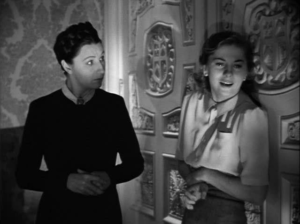
If you ask me what my favorite Hitchcock film is, I will say The Birds, but my close second is Rebecca. I always like to pick apart characters when it comes to a Hitchcock film (or anything for that matter). In Rebecca, the characters are so interesting. In fact, and most important, the second Mrs. de Winter (Joan Fontaine) doesn’t even have a first name. She has no identity than what others call her in this film. That blew my mind. She ends up trying to form her identity into what people want her to be, especially in her marriage. It’s enough to have someone, at some point, hit their breaking point.
This shot is a rough one. Mrs. Danvers is taunting the second Mrs. de Winter. She’s telling her almost everything to know about the first Mrs. de Winter. The look of absolute hysterics on this woman as Mrs. Danvers goes on is upsetting. I wanted her to stop for the second Mrs. de Winters sake. This scene makes you want to scream, “LEAVE HER BE.” You sit uncomfortably. You know this woman is going through a time as she’s haunted by a woman she can never live up to. – Insha
08. Black Narcissus (1947)

I’m really on some normie shit with my choices this time, but it’s hard to argue with the classics. This frame from Black Narcissus will be familiar to you if you follow the Twitter page One Perfect Shot. They basically repost it every other week. For good cause though! The matte work in this scene, and many others that include the bell tower, is beautifully and realistically rendered. You’d think an erotic drama about nuns in the Himalayas could get away with being set-bound and intimate, but they really go for it, and I appreciate it. That’s why I’m singling it out over 70 years later. – Michael
07. Meshes of the Afternoon (1943)
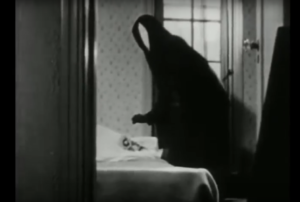
Avant-garde is a category of film that’s misunderstood. Most see it as this artsy-fartsy movement and, I mean, it’s totally half true, but some impressive stuff came out of that movement that made film what it is today. You see the ripple effect that avant-garde has in filmmakers like Panos Cosmatos, David Lynch, Lars von Trier. In the movement, Maya Deren was like, the godmother of avant-garde film, making high experimental pieces and Meshes of the Afternoon is a wonky fucking film.
The shot that always stood out from my mind is when the “grim-reaper” is placing a flower on her bed. Before this, she struggles to chase him down, but the “grim-reaper” with the mirror for a face finally turns to her, almost as self-reflection. After this, she goes deeper into psychosis, and ultimately her life ends. It’s seriously fascinating and (and a bit nauseous when adding the soundtrack by Teijo Ito). – Insha
06. Fantasia (1940)
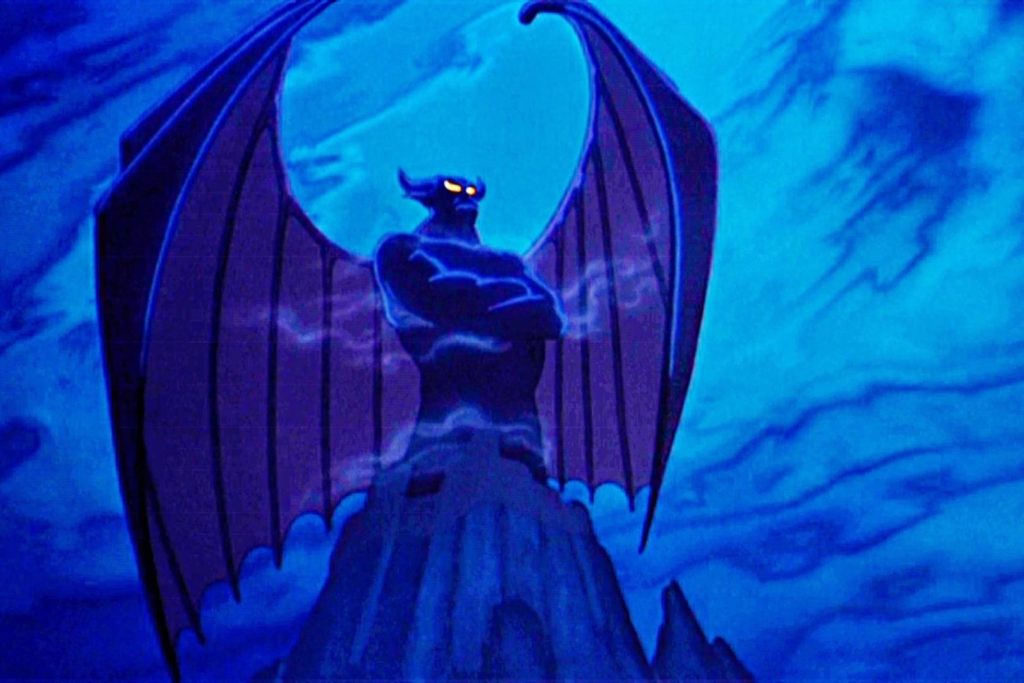
Fantasia might be the last time Disney actually went out on a limb and tried to do something truly exciting and unique. Not that there haven’t been great Disney films since 1940, but nothing like this. There are eight animated segments accompanied by various classical music pieces, and each segment is impressive. My personal favourite is “The Sorcerer’s Apprentice” with Mickey Mouse, but the most striking image is the one that’s stuck with me since I was a very small child. It’s Chernabog, standing awesomely tall and terrifying in the segment “Night on Bald Mountain.” That segment, and that image, in particular, burned itself into my imagination. I don’t think a lot of kids would say the same about cows dancing in Home on the Range. But maybe I’m wrong. – Michael
05. The Postman Always Rings Twice (1946)
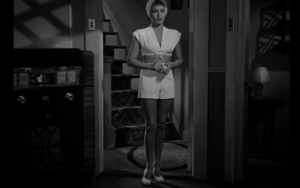
In retrospect, this should be a straightforward shot to talk about. Cora Smith (Lana Turner) standing in the doorway after Frank Chambers (John Garfield) catches her in full view. However, this single shot shows and proves that this dude was 100% fucked from this moment on. Postman Always Rings Twice is a story of an affair that takes so many left turns that you find your head spinning in a good way. It’s one of those movies that always stuck out for me as a classic from the 40s. It’s also one of those movies that ultimately showed how much lust would get you in trouble. Frank catches a glimpse of Cora’s legs, slowly up to the whole body, and he goes from 0 to Cora-matized in a heartbeat. Also, this shot of Lana Turner, in general, is just something of a stunner. – Insha
04. The Third Man (1949)
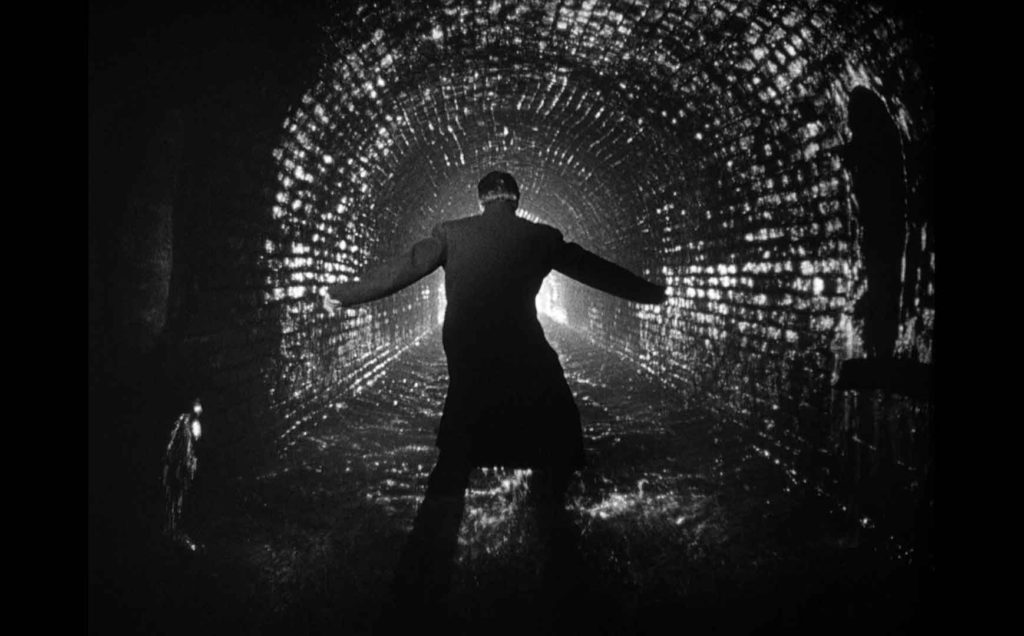
My second normie-ass selection of this list is one that’s hard to argue with. I could have selected any number of frames from the gorgeous black and white cinematography in The Third Man, but I always come back to this one. Again, it could just be its ubiquity on One Perfect Shot, but whatever. The Third Man isn’t just one of the best film noirs of all time. It’s one of the best films period. (Insha: Confirmed.) The location shooting in Vienna was the right choice, and the expressionistic shooting style of Robert Krasker allowed places like the Ferris wheel and the sewers and tunnels to come to life. – Michael
03. Pinocchio (1940)
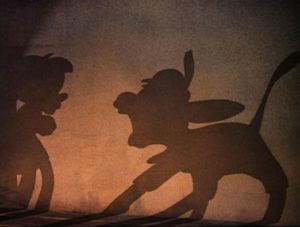
Pinocchio is the only film that I can’t watch from Disney to this day. Why? Cause of the fucking Donkey scene. Don’t get me wrong. It’s a good scene. However, I love myself too much to keep the pain going for so long, so the buck stops here. I’m never talking about it after this article. The donkey scene is one of those scenes that develops and makes you undeniably upset every single time.
Pinocchio goes to Pleasure Island and befriends a boy named Lampwick. They start smoking, gambling, drinking, but because of their behavior (and the curse on the island), they all begin to turn into donkeys. Now, the shadow shot as he morphs into a donkey, yelling towards Pinocchio terrifies. Not only because of the shot, but also because of the sound. The boy screams “MOM” as he’s transforming. We all call out to our parents when we know we’re in deep trouble or hurting. That was one of his last please before turning into a donkey and shipped off to slave labor. Way fucked up. – Insha
02. Rope (1948)
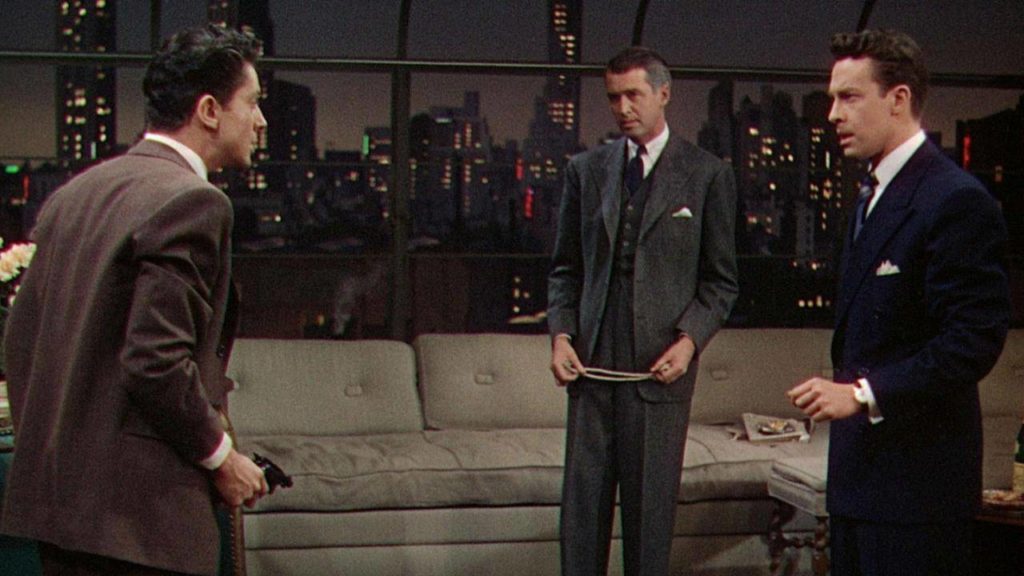
The best shot in Alfred Hitchcock’s Rope is… the entire dang film! This is absolutely a cheat, but I figured if Hitchcock is allowed to make a film with a gimmick I’m allowed to use that gimmick to my advantage. The story is about Brandon Shaw (John Dall) and Phillip Morgan (Farley Granger), who murder their “friend” and hide him in a chest in the living room just before a dinner party. They commit the crime just to see if they can get away with it, and to try to impress their school friend and mentor, played by James Stewart.
Rope is filmed as one continuous shot — actually up to 10 minutes at a time with visual cheats to make it look seamless — employing set walls on rollers and well-rehearsed choreography to make it seem like much more than a stage play. The film is sometimes considered a mid-tier Hitchcock, but I think it’s a perfect example of his ability to take an audience-grabbing gimmick and actually put some depth and weight behind it. – Michael.
01. Cat People (1942)

Cat People creates so much tension within the film. It’s something that sits with you throughout the movie. The tension between the two women dueling for Oliver’s affections, our CatLady Irena and best woman ever, Alice, comes to a head in two scene. This one, in particular, is the best example of that.
Alice goes for a nightcap swim. Irena tries to find Alice in the pool. Alice is about to go into the pool when the kitten who follows her down hears a strange noise. It’s frightened by something it knows is there, but Alice can’t see it. She hops into the pool but then surrounded by shadows of cats and sounds to match. The scene sets up ‘what you can’t see is more frightening about what you can.’ It’s such an anxiety-ridden scene. The way Jane Randolph’s facial expressions pull this off is outstanding. She’s vulnerable in the water, scared of anything that may come her way. It’s such a simple reaction, but you feel almost as vulnerable with her at that moment. – Insha
We’ll be back next time with giant lizards, some upset gentlemen, and a famous bloodsucker…


